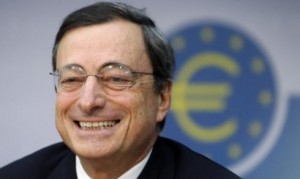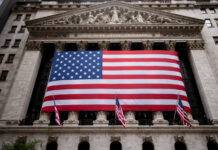
- 1 Euro took a roller-coaster ride Thursday after the European Central Bank’s monetary policy announcement.
- 2 This reversal caught many investors by surprise because the main takeaway from Thursday’s meeting is that the ECB has no immediate plans to add stimulus — nor did they feel that the currency was high enough to renew concerns about its impact on the economy.
- 3 Considering that the market’s fear about Draghi backpedaling and saying that rates could be lowered again didn’t materialize, we view the euro as a buy near 1.1200.
- 4 Meanwhile, mixed U.S. data led to a mixed performance for the U.S. dollar.
- 5 Sterling traders continued to ignore weaker data.
- 6 There’s been quite a bit of volatility in the Canadian dollar this week and the currency will be in play on Friday with key data scheduled for release.
- 7 The Australian and New Zealand dollars also traded lower versus the greenback on mixed data.
Euro took a roller-coaster ride Thursday after the European Central Bank’s monetary policy announcement.
The ECB left interest rates unchanged and the decision, which was widely anticipated, sent EUR/USD to 1.1360. When Mario Draghi took to the podium and avoided talking about more easing, choosing instead to say that ECB policies must be given more time to work (our most hawkish scenario), EUR/USD soared to a high of 1.1398. However when his press conference ended, euro nosedived and ended the day lower versus the greenback.
This reversal caught many investors by surprise because the main takeaway from Thursday’s meeting is that the ECB has no immediate plans to add stimulus — nor did they feel that the currency was high enough to renew concerns about its impact on the economy.
The ECB is still dovish, it sees euro area risks tilted to the downside and expects rates to remain at present or lower levels for an extended period of time. However on the bright side, Draghi noted that broad financing conditions improved, low oil prices are supporting domestic demand and inflation is expected to pick up in the second half of the year and improve further in 2017/2018. The recovery is proceeding as the ECB expects and the only comment he made about the currency was that the exchange rate is not a policy target. Of course, he added the obligatory “ECB stands ready to act with all instruments in its mandate” but they “didn’t discuss additional policy measures today.”
Considering that the market’s fear about Draghi backpedaling and saying that rates could be lowered again didn’t materialize, we view the euro as a buy near 1.1200.
The Federal Reserve meets next week and just as the ECB had to acknowledge recent improvements, the Fed will be forced to recognize the trend of weaker data. Eurozone PMIs (Manufacturing, Markit, Services) are scheduled for release on Friday and the drop in German industrial production plus factory orders signals the potential for slower growth, which could be the catalyst that drives EUR/USD to its 1.12 support level.
Meanwhile, mixed U.S. data led to a mixed performance for the U.S. dollar.
The greenback traded higher against commodity currencies, recovered earlier losses versus euro and sterling but weakened against the Japanese yen. Manufacturing activity in the Philadelphia region contracted in April, raising doubt about the sector’s recovery. Jobless claims on the other hand continued to improve, falling to its lowest level since 1973. Continuing claims also dropped to a 15-year low, which is a sign of continued recovery in the labor market. However fewer job losses has not always translated into stronger job growth. Low jobless claims are encouraging but won’t be enough to offset the drop in retail sales.
Sterling traders continued to ignore weaker data.
Retail sales dropped an alarming -1.3% in March, matching the decline in December, which was the sharpest since Jan 2014. Spending has now declined for 2 out of the last 3 months, which means we are likely to see another quarter of soft GDP growth. Stronger public sector finances were credited for the pound’s resilience but at the end of the day, what matters are jobs, wages and spending — all of which weakened in March. Having traded as high as 1.4440, we are looking for GBP/USD to hit 1.4100 as the weight of slower growth weighs on the currency.
There’s been quite a bit of volatility in the Canadian dollar this week and the currency will be in play on Friday with key data scheduled for release.
After 4 straight days of gains, the loonie retreated versus the dollar as oil prices retraced. Retail sales and consumer prices are due on Friday. The sharp drop in wholesale sales (largest decline since 2008) signals potential weakness for retail sales. Spending soared in January and a cutback would not be unusual. Consumer prices, on the other hand, should increase as oil prices recover. We began to see signs of stronger price pressures in the manufacturing sector with the price component of the IVEY PMI index extending higher. We could now see prices move higher on the consumer level as well. Its worth noting that the 2-year U.S.-Canadian yield spread is starting to base and if Friday’s data are weak and oil prices fall further, we could see the makings of a bottom in USD/CAD.
The Australian and New Zealand dollars also traded lower versus the greenback on mixed data.
In New Zealand, job ads increased and consumer confidence improved but spending declined at a faster pace. In Australia, business confidence held steady in the first quarter. No economic reports are scheduled for release from either country and based on the charts, we could see another 50 – 100 pip decline in both currencies versus the dollar. A deeper correction would be needed, however, to put the up trends into question.
Source: Investing.com
Have a great weekend!
Yours,
Vladmir














